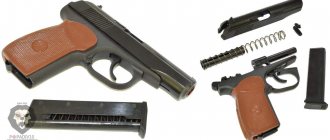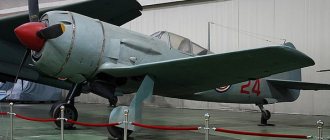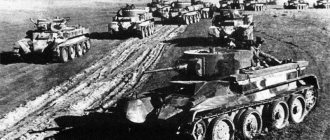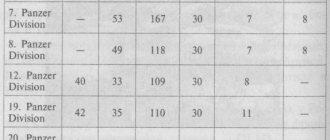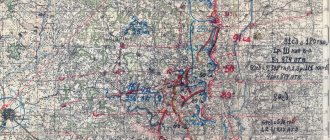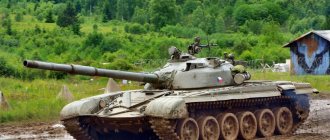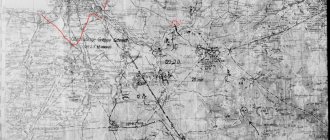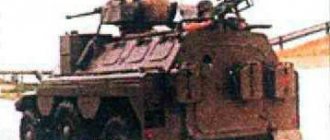Compilation about rollers T-34 and 34-85..
The first version of wheels on the T-34 tank can be easily distinguished by the number of bolts holding the wheels together. There were 12 of them. This type of roller is not seen in any photo, except for two pre-production cars. Their image is given in the “Operation Manual...” of 1941. Supplied truck tires for the first cars. The first production model of the roller was distinguished by ten bolts, a protruding lining in the central part of the disk, a rubber band (weight tire - as in the “Manual ...”) with a tread and through perforation. Externally, the roller was very similar to its predecessor - BT-5 - BT-7, and in some cases could be replaced by them (as was the case on captured Finnish thirty-fours in the absence of spare parts). Perforation and notching were supposed to not only guarantee a soft ride, but also ensure good cooling of the bandage. Not only rollers, but also sloths were equipped with rubber bands. The quality of rubber was given special importance, so mainly imported rubber was used for rubber. The "thirty-four" bandage was not removable and could not be replaced without replacing the skating rink. It was welded once and for all, or rather, until the moment when the disk was again at the factory for welding. In 1941, the enterprise that performed this operation was the Yaroslavl Tire Plant, also known as the Yaroslavl Rubber Plant. Even the best rubber breaks down under load. The heaviest load is on the smallest wheels - the drive and idler. From the first days of production, a metal band was used on the drive wheel, and rubber-coated sloths were used for quite a long time. On the drive wheel, instead of the crown nuts securing the roller, studs with conical eccentric heads are being used. With the beginning of the war, the situation with imported components worsened, and their replacement with domestic synthesized analogues did not make the rubber better. To maintain strength, we had to abandon the perforation and “tread”, which in turn reduced the durability of the skating rink and slightly increased the weight. Since 1943, reinforced stamped wheels have become widespread. Their external difference was the use of ordinary nuts instead of crown nuts and the fact that the reinforcement ring in the center of the disk was not stuck by welding, and was completely absent on rollers of 1944 and subsequent years of production. The wheel hub became cylindrical, and not pear-shaped as before. The weight tire of the last years of production did not have perforations and “tread”, but was distinguished by a wide variety of patterns on the side surface. The stamp on the tire indicated the factory, date and change of manufacture. The second group of numbers, usually “830x150x660” or “830x150x660” indicated the standard size. This inscription was engraved on the form. There are different fonts, sizes and positions on the rubber. The appearance of a skating rink with internal shock absorption is interpreted in different ways. Different sources indicate different data. The following version, which has been repeated many times in memoir literature, can be considered the most probable. During this period, the Stalingrad Tractor Plant remained practically the only manufacturer of T-34 tanks. Since the load on the railway was simply incredible (the evacuation continued), rubberized stamped rollers went to Stalingrad from Yaroslavl by river transport along the Volga. The winter of 1941-1942 turned out to be unusually early and frosty. Due to early freeze-up in October 1941, barges with rollers did not reach Stalingrad. This is what made us look for a way to do without rubber. An attempt to make wheels without shock absorption did not give any results - the unpretentious Soviet tanker could still put up with the terrible shaking, but during testing, the experimental roller cracked after a few kilometers. Rollers with internal shock absorption had long been known and were used on KB, T-50 and other tanks, but no one had used rollers of such a large diameter. The second and main problem was this. that even for internal shock absorption, rubber was still needed. As usual, engineering ingenuity came to the rescue. The plant had a significant supply of small-diameter wheels for tractors. They made excellent rings for internal shock absorption. The plant announced a competition, as a result of which an effective way to remove a tractor tire and make rings from it was found. It would seem that the problem was solved, but the old tracks could not withstand the new loads. It was necessary to create a new track, with a reinforced joint (Stalingrad track), a new drive wheel and a sloth. The Stalingrad sloths received additional stiffening ribs, and on one of the types, egg-shaped relief holes alternate “every other.” The Stalingrad drive wheels of this period were also distinguished by the characteristic shape of reinforcements-arcs around the lightening holes. The performance characteristics of the new chassis were significantly lower, the shaking was felt more strongly, the weight of the car increased, but this was a way out. All this work was completed in record time. The detective story does not end there - the experience of the Stalingrad residents is being studied on both sides of the front line. We found it most attractive to save rubber and eliminate the need to send wheels to a tire factory, and then rubber-coated wheels back. It also became possible to replace shock-absorbing rings in a front-line workshop.
According to other sources, work on the development of a chassis with internal shock absorption began in the early autumn of 1941, but the surviving drawings of these developments depict a completely different design, characterized by a large diameter of the central part, in which four rings with a diameter of 650 mm were installed. This option did not provide significant savings in rubber, and the production of such large rings at a non-specialized enterprise was impossible. The Germans, in their own way, appreciated the fact that at the height of the war, the Russians abandoned low-quality synthetic rubber in favor of natural (pre-war!) rubber. Internal shock absorption was increasingly used by Germany as the tire situation worsened and the Soviet experience was cited as a classic example. Since January 1942, rollers with internal shock absorption were introduced at other factories, and in the summer of 1942 they were recommended for all T-34 tanks, first for installation in the middle of the chassis (until August 1943), and then, with the permission of the People's Commissar of Tank industry, everywhere. As the allies stabilize supplies, internal depreciation is gradually abandoned. First, the first roller is replaced with a rubberized one, then the first and last, and then the first third and last roller. By the end of 1943, the production of Stalingrad rollers was completely abandoned, although they were still found in the troops. Even the post-war “Operating Manual...” allowed the use of rollers with internal shock absorption on the T-34-85.
Subsequently, when analyzing the use of a simplified chassis, a number of extremely negative factors were noted that affected the suspension, transmission and engine, leading to a decrease in the combat qualities of the tank. But the experience of producing rollers using the casting method was not in vain - the established cycle was subsequently used in the manufacture of discs for rubberized rollers. Since work to improve the T-34 tank and its further development - T-43 and T-44 - was carried out in parallel, many design solutions move from one topic to another. A cast roller with stiffening ribs “every other” appears on the T-34 tank, first without small holes, then with six small holes in the middle part of the disk. Such wheels are typical for Ural tanks produced in 1943. Subsequently, more developed ribbing appears on their disks, and the number of small holes varies from twelve to ten. There are two types of such wheels - early ones with large holes, and with holes of a smaller diameter, but with ring reinforcements around the holes. The bandage on them differs from the bandage of the early type - with perforations and risks - there are 40 of them, which is associated with the organization of rubber production for the thirty-four at other enterprises. On the latest types of cast rollers, the tire is used without marks or perforations, but with different types of patterns on the side, like stamped wheels of the same years of production.
The new sloths receive reinforced fins (ten identical stiffening ribs), and then ring reinforcements around the holes. Their diameter decreased from 504 to 495 mm. They remained in this form until the end of production of the Thirty-Four. Since the beginning of 1942, the drive wheels have been cast as a whole, and not made of two parts as before, so the 12 crown nuts that held the halves together in the middle disappear. For some time the drive wheel was produced in one piece and without rollers; this decision was very soon recognized as unsuccessful. With the beginning of the installation of a five-speed gearbox on the tank (another technical solution that came from the T-43 project), the diameter of the drive wheel was increased from 634 to 653 mm, and it remained that way, although minor external differences were still encountered. Bearing caps are found two types - hemispherical, and in the form of an elongated pusphere. After the war, another bolt was installed in the center of the cover for ease of lubrication. The average "thirty-four" underwent repairs 4.5 times. Rollers of the type that were there before were not always available. Even the post-war “Operating Manual for the T-34-85 Tank” provides for the possibility of installing a roller with internal shock absorption. In practice, this type of roller was disposed of at the first opportunity; the combination of “track-roller-sloth-drive wheel” was very, very diverse; only the most typical examples are given here.
ps
The trailer got caught... :
“Indeed, the T-34 and KB used a diesel engine, but at the same time they placed the fuel tanks in the fighting compartment. Accordingly, when the tank was hit, the tank crews were showered with rain from the solarium. Diesel fuel was difficult to ignite, but once it did catch fire, it was difficult to put it out. Tankers with T-34s sometimes received more severe burns because of this than those who fought in gasoline-powered T-60s and T-70s. ... People's ingenuity prompted the mechanics-drivers of the "thirty-four" to consume fuel from the front tanks first. But there was another problem: when a cumulative projectile hit the tank, the empty tank filled with diesel vapor detonated, so much so that it tore out the 45-mm frontal armor plate. In the reality of simple and clear answers to the question “what is best?” did not have. It is better to install a diesel engine and place the tanks in the fighting compartment, or install a gasoline engine and isolate the tanks in the stern, in the engine compartment (as on the Pz.III), where, according to statistics, only a few percent of shells fall and which is separated from the fighting compartment by a fire partition. The thesis about short-sighted or stupid engineers of a particular country should always be taken with great caution.”
"" Ref. No. 632/3 11/1Х-44
Report of the NKV special laboratory No. 101-1 on the topic:
STUDYING THE FEATURES OF DAMAGE TO THE FUEL TANK OF THE T-34 TANK BY ARMORS-PIECING HIGH-EXPLOSIVE AND CUMULATIVE (ARMOR-BURNING) AMMUNITION OF THE GERMAN FASCIST ARMY.
Rep. performers: Rozov, Kaminsky, Shurov Director: Sarafanov
1. Background
In the battles of the spring-summer of 1943, tank commanders. armies, tank commanders. corps and armored brigade began to note more frequent cases of the death of T-34 tanks in battles, occurring with the explosion of fuel tanks, or a fire in the fighting compartment... For example, the cases of fire of T-34 tanks in the battles of the summer of 1943 near Kursk exceeded the cases of fire of T-70 tanks by 4-9%... By order of the head. BTU GBTU of the Red Army engineer-colonel Afonin September 11. In 1943, a commission was formed to study this issue. Our group was studying the possibility of an explosion in the T-34 fuel tank when using various armor-piercing weapons and assessing its possible impact on the crew and internals. equipment…
2. Statement of the problem
... An inspection by the commission at the SPAM bases of 72 combat vehicles destroyed during the battles on the Kursk salient showed that most of them (68%) were destroyed by a fire that resulted from the depressurization of the fuel tank and the subsequent ignition of diesel fuel. All of these tanks have been damaged on the side or fender of the tank by an armor-piercing, armor-piercing projectile, or by a landmine... Approximately a third of these tanks are missing one or two fuel tanks and there are destructions inside the tank, or partial or complete destruction of the hull welds, which occurred as a result of an internal explosion . Only a small part of the tanks (8%) have traces of an internal explosion with traces of fire. While 24% of combat vehicles were destroyed only as a result of an internal explosion, and no traces of fire were found in them. Often even the ammunition is completely preserved in the stowage. According to the order received, our group investigated exactly this type of damage - the explosion of a fuel tank... Members of the commission, engineer-colonel Gurov and associate professor of the Moscow Higher Technical School Krutov, after examining the consequences of the exploded tanks, suggested that the indicated damage was caused as a result of the explosion of the front fuel tanks located in the T-34 tank after exposure to some German specific ammunition. Engineer Major Firsov expressed the opinion that such an explosion of a fuel tank could occur as a result of a rupture inside the tank of high-temperature ammunition based on thermite or electron - Comrade Group. Sarafanova received the task personally from the beginning. GBTU to investigate the possibility of fuel detonation in T-34 tanks when various types of anti-tank ammunition of the Nazi German army enter it. ...
4. Research equipment
To check the assumptions of vol. Gurov, Firsov and Krutov, by the forces of NII-48 and Uralmashzavod, three full-scale mock-ups of sections of the hull of the T-34 tank with a capacitance fuel tank installed inside were built from 35 mm thick armor steel. 135 l. (see drawing .2), will also accompany in accordance with. By letter No. 312-a dated 21.1U-44, BT control delivered the hull of a T-34 tank with a turret and equipment installed inside, but without weapons, to the training ground. ...
5. Conducting full-scale experiments.
The first shelling of full-scale mock-ups was carried out on 12/X11-43 from the ballistic barrel of a 75-mm anti-tank gun mod. 40 g from a distance of 30 m. 1. During the test, the fuel tank was completely filled with diesel fuel obtained from the accompanying company. letter from Comrade Afonina from 5/X11. A total of 8 shells mod. 38, 5 shells mod. 39/40 and 5 armor-piercing ones. The results are shown as follows... During the tests, the tank was completely destroyed 3 times, diesel fuel caught fire 4 times... No explosions were recorded. When fragments of a Model 39/40 shell hit the tank, the latter experienced sharp braking. Many fragments did not penetrate through the tank... Conclusions: The filled tank of the T-34 tank cannot be the source of an internal explosion of the T-34 tank, but even serves as protection against armor fragments and shell cores mod 39/40. 2. Since Comrade Krutov expressed the opinion that gasoline also cannot explode if the tank is full, with the approval of Comrade. Fedin had a gasoline tank installed in the section. At which 3 shots were fired with a model 38 projectile and 1 armor-burning one. No explosions were recorded; in 2 cases gasoline caught fire.
The second stage of testing began on 9/11-44. The same weapon was used for testing, but supplemented with an 88-mm dynamo-rocket gun mod. 43, firing 88-mm armor-burning mines. According to the approved program, tanks that were not completely filled were tested. Moreover, before the shelling tests, the tightly closed tank was carried in the back of a truck along a country road for 1-2 hours, after which the fuel was drained from it according to the attached diagram and the tank was installed on a mock-up... ... 4 series of shots. Tank is 10-25% full An explosion of the tank causes a cumulative jet to enter it when it is 25% full or less. The equivalent explosive power was about 30-50 grams of TNT. The hatch cover on the roof of the model, intended for loading the fuel tank, was knocked out. If filled with gasoline, the high explosiveness of the mixture decreases on average by 1.5 times compared to diesel fuel. The detonation of the tank caused the hatch cover to open. The model's welds remained intact. ... A different picture is observed when the high-explosive part of a 75-mm armor-piercing projectile with a red ring, equipped with 80 gr., explodes inside an unfilled tank. TNT with a detonator of 20 gr. phlegmatized heating element in an aluminum glass. In this case, the high-explosive effect of the projectile increases sharply (several times). The detonation that occurred during the explosion of the tank destroyed the welds of the bottom of the fender liner, after which the resulting shock wave tore out the bottom and partially destroyed the roof of the model. The layout is rendered inoperative. ...
6. Conclusions:
The best ratio for detonation of the T-34 fuel tank is caused when it is filled with fuel by 10-15% of the volume and when an armor-piercing projectile mod. 38 “mouths” containing 80 grams of TNT and 20 grams. phlegmatized ten. The explosion causes immediate detonation of fuel vapor, which combines with the effect of the projectile, increasing its power by 2-4 times, which corresponds to the effect of a 105-122 mm armor-piercing projectile. An even better overall high-explosive effect is obtained when a patronymic rupture occurs in the tank. 76.2-mm armor-piercing projectile BR-350A containing 150 grams of TNT, which in total corresponds to a 152-mm armor-piercing projectile of the BR-540B type containing 400 grams of TNT. As the caliber of armor-piercing ammunition decreases, the likelihood of a tank explosion decreases sharply. 37-mm and 45-mm armor-piercing shells practically do not cause detonation of the T-34 fuel tank... It should be noted that an increase in the caliber of armor-piercing ammunition does not lead to a significant increase in the high-explosive power of the ammunition exploded inside the tank. Optimal for detonating tanks is the presence of 75-85 mm ammunition containing 50-100 g. TNT, or a smaller amount of stronger blasting substances (for example, 30-80 g of mixture A-1X-2, or 25-50 g of phlegmatic hexogen). In this case, the tank capacity must be at least 100 liters. 30-50 l. containers do not create a significant increase in the high explosiveness of armor-piercing ammunition. ... Countermeasures: 1. Do not allow fuel tanks to be placed in the fighting compartment of the tank. 2. During the battle, first consume fuel from the rear tanks, since their defeat is not so likely. 3. Try to reduce the accumulation of fuel vapors and the formation of high concentration fuel vapors inside the tank using structural measures. For example, introduce the supply of fuel from the tanks by replacing it with a non-flammable liquid or gas that does not support combustion... Organize the purging of the fuel tanks with carbon dioxide and exhaust gases before the fight, or constantly ventilate the front tanks. 4. Reduce the volume of fuel tanks inside the T-34’s fighting compartment by at least half. 5. Place fuel tanks behind sealed armored barriers...
Rozanov (this is not my mistake, it’s in the document, M.S.) Kaminsky Shchurov
beginning gr. Sarafanov "
(c) M.N. Svirin, forum of the site “Military Literature”
Thank you
- Comments (0)
Comments can be posted only by registered users.
JComments
Pages of history
During the war, during repairs, rollers from different factories were often installed on the T-34, so there are many photographs of “thirty-fours” whose chassis is equipped with road wheels of various designs. Some of the rollers on one tank could be stamped, some cast or with internal shock absorption. But this tank has Panther rollers. https://avatars.mds.yandex.net/get-zen_doc/17082... It is known that the Red Army used captured equipment, like any belligerent side. Parts were also installed on the Soviet tank as spare parts from a German tank. It is not surprising that during the offensive operations of the Red Army, as a result of battles and long marches, a significant number of armored vehicles failed, and a shortage of spare parts could arise. It is not known who first came up with the idea of installing Panther support rollers as road wheels on the T-34 tank, just as it is unknown how many tanks were repaired in this way. It is also unknown whether these rollers were removed from the damaged Panthers or whether they were rollers from captured German spare parts warehouses. But still, most likely these rollers were captured as spare parts, and some craftsman decided: “Don’t let the goodness go to waste. Everything will work on the farm.” What had to be done to install the Panther road wheel on the T-34? The manual for the material part of the T-34-85 tank says that the diameter of its road wheel is 830 mm. The diameter of the track roller of the Panther tank is 860 mm. These are very close and not critical parameters. But the T-34 and the Panther have different hubs, so in order to install a German roller on the T-34, it needed to be altered. https://avatars.mds.yandex.net/get-zen_doc/15924... On the left is the T-34 skating rink, on the right is the “Panther” skating rink. On the left is the T-34 skating rink, on the right is the “Panther” skating rink. For this, the internal diameter of the “Panther” skating rink was bored to 210 mm, which corresponded to the T-34 hub mounted on a stamped disk. The seat for the hub was bored out and two holes were drilled out. Four more were drilled again. On the Panther roller (probably it would be correct to say on the disk) there were 8 holes for attaching it to the hub, but they were not suitable for attaching the T-34 hub. Therefore, two holes on the skating rink had to be drilled out to the required diameter, and four holes had to be re-drilled. Such a procedure cannot be called extremely difficult, and PTRZ (mobile tank repair plants) coped with this task quite easily. At the same time, after assembling the roller, the gap between its disks was almost twice as large as on the production T-34 rollers. The fact that similar work was carried out at the 4th PTRZ in the winter of 1944-1945 is confirmed by the photographs found. It is unknown whether similar work was carried out at other tank repair enterprises. It was noted that the Panther rollers, due to their high load, have less reliability compared to the serial T-34 rollers.
T-34-85 in the post-war period
Production of the last serial "thirty-four" ended in 1946, and was replaced by a medium tank with the T-44 index. In the post-war period, the T-34-85 was still the main tank; it remained in this status until the 1950s. The T-44 was supplied to the troops in small quantities, and the production of the T-54 occurred at a very slow pace.
As the armored tank fleet of the USSR was updated, the T-34-85 passed into training status and was gradually removed from service, and, for example, the vehicles located in the training units of the Trans-Baikal and Far Eastern districts were used until the beginning of the 1970s.
After the end of the war, the T-34-85 took part in almost all military conflicts: in Korea, Vietnam, Kampuchea, the Middle East, Cuba, Afghanistan and others. The "thirty-four" also took part in military conflicts in Europe: the Hungarian uprising of 1956, military clashes between Turks and Cypriots on the island of Cyprus and the war in Yugoslavia in the 1990s.
The T-34-85 was in service with the ATS countries, a number of African countries, and was also in service in the states of Southeast Asia. Today, the “thirty-four” continue to carry out military service in several countries (Vietnam, Guinea, Yemen, North Korea, Laos, Cuba, etc.).
